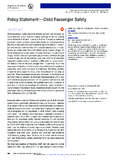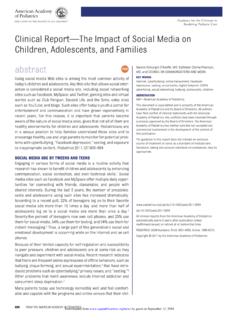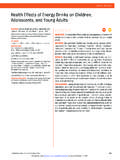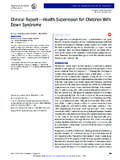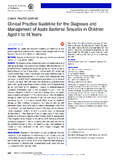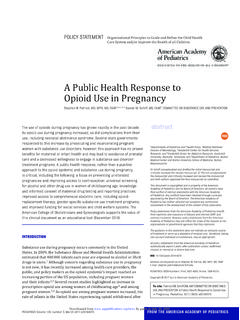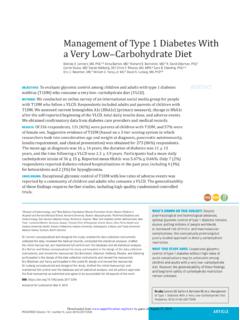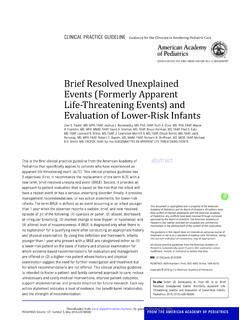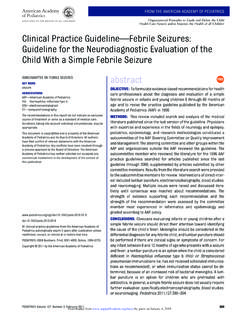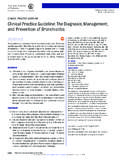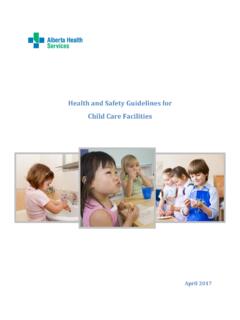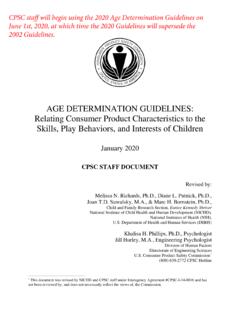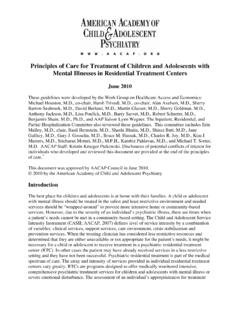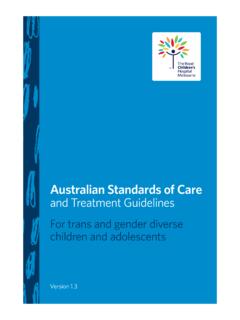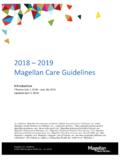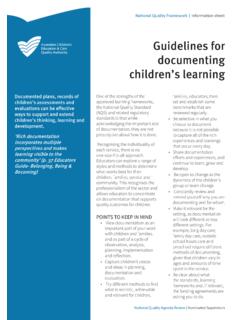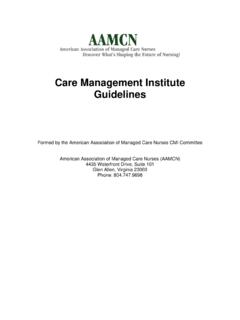Transcription of Guidelines for Adolescent Depression in Primary Care (GLAD ...
1 STATEMENT OF ENDORSEMENT. Guidelines for Adolescent Depression in Primary care (GLAD-PC): Part I. Practice Preparation, Identification, Assessment, and Initial Management Rachel A. Zuckerbrot, MD, a Amy Cheung, MD, b Peter S. Jensen, MD, c Ruth Stein, MD, d Danielle Laraque, MD, e GLAD-PC STEERING GROUP. OBJECTIVES: To update clinical practice Guidelines to assist Primary care (PC) abstract clinicians in the management of Adolescent Depression . This part of the updated Guidelines is used to address practice preparation, identification, assessment, and initial management of Adolescent Depression in PC settings.
2 METHODS: By using a combination of evidence- and consensus-based methodologies, Guidelines were developed by an expert steering committee aDivision of Child and Adolescent Psychiatry, Department of Psychiatry, in 2 phases as informed by (1) current scientific evidence (published and Columbia University Medical Center, and New York State Psychiatric Institute, New York, New York; bUniversity of Toronto, Toronto, Canada;. unpublished) and (2) draft revision and iteration among the steering committee, cUniversity of Arkansas for Medical Science, Little Rock, Arkansas.
3 Which included experts, clinicians, and youth and families with lived experience. dAlbert Einstein College of Medicine, Bronx, New York, New York; and eState University of New York Upstate Medical University, Syracuse, RESULTS: Guidelines were updated for youth aged 10 to 21 years and correspond New York to initial phases of Adolescent Depression management in PC, including the This document is copyrighted and is property of the American Academy of Pediatrics and its Board of Directors. All authors have identification of at-risk youth, assessment and diagnosis, and initial management.
4 Filed conflict of interest statements with the American Academy The strength of each recommendation and its evidence base are summarized. of Pediatrics. Any conflicts have been resolved through a process approved by the Board of Directors. The American Academy of The practice preparation, identification, assessment, and initial management Pediatrics has neither solicited nor accepted any commercial involvement in the development of the content of this publication. section of the Guidelines include recommendations for (1) the preparation of the PC practice for improved care of adolescents with Depression ; (2) annual universal The guidance in this publication does not indicate an exclusive course of treatment or serve as a standard of medical care .
5 Variations, taking screening of youth 12 and over at health maintenance visits; (3) the identification of into account individual circumstances, may be appropriate. Depression in youth who are at high risk; (4) systematic assessment procedures by All statements of endorsement from the American Academy of using reliable Depression scales, patient and caregiver interviews, and Diagnostic Pediatrics automatically expire 5 years after publication unless reaffirmed, revised, or retired at or before that time. and Statistical Manual of Mental Disorders, Fifth Edition criteria; (5) patient and DOI: https:// doi.
6 Org/ 10. 1542/ peds. 2017- 4081. family psychoeducation; (6) the establishment of relevant links in the community;. and (7) the establishment of a safety plan. Address correspondence to Rachel A. Zuckerbrot, MD. E-mail: rachel. CONCLUSIONS: This part of the Guidelines is intended to assist PC clinicians in PEDIATRICS (ISSN Numbers: Print, 0031-4005; Online, 1098-4275). the identification and initial management of adolescents with Depression in an Copyright 2018 by the American Academy of Pediatrics era of great clinical need and shortage of mental health specialists, but they cannot replace clinical judgment; these Guidelines are not meant to be the sole source of guidance for Depression management in adolescents.
7 Additional To cite: Zuckerbrot RA, Cheung A, Jensen PS, et al. Guidelines for Adolescent Depression in Primary care (GLAD-PC): Part I. research that addresses the identification and initial management of youth Practice Preparation, Identification, Assessment, and Initial with Depression in PC is needed, including empirical testing of these Guidelines . Management. Pediatrics. 2018;141(3):e20174081. Downloaded from by guest on October 12, 2019. PEDIATRICS Volume 141, number 3, March 2018:e20174081 From the American Academy of Pediatrics Background and the Resource for Advancing the DSM-5.
8 Although the evidence children 's Health (REACH) Institute for the psychopharmacology Major Depression in adolescents along with leading experts across recommendations in the is recognized as a serious the United States and Canada to accompanying article focuses psychiatric illness with extensive address the need for a synthesis exclusively on MDD, the acute and chronic morbidity and of knowledge in this area. The recommendations around mortality. 1 4 Research shows result of this initiative was the identification, assessment, and that only 50% of adolescents development of the Guidelines for initial management can be applied with Depression are diagnosed Adolescent Depression in Primary to other forms of Depression as before reaching In care (GLAD-PC).
9 These Guidelines well. Primary care (PC), as many as 2 in are based on available research 3 youth with Depression are not Our Guidelines also distinguish and the consensus of experts identified by their PC clinicians between mild, moderate, and in Depression and PC. The two and fail to receive any kind of severe forms of MDD. The DSM-5. companion articles 17, 18. constituted care . 6, 7 Even when diagnosed by Depression criteria include 9. the first-ever evidence- and expert PC providers, only half of these specific symptoms that have been consensus derived Guidelines to patients are treated appropriately.
10 5 shown to cluster together, run in guide PC clinicians' management Furthermore, rates of completion of families, and have a genetic basis, 20 24.. of Adolescent Depression . The specialty mental health referral for and a large body of evidence Guidelines were also accompanied youth with a recognized emotional accumulated over time now by a tool kit (available at no cost for disorder from general medical supports the internal consistency download at http:// www. gladpc.. settings are low. 8 of depressive symptoms and the org). validity of the major Depression In view of the shortage of mental In this article, we present the construct.
